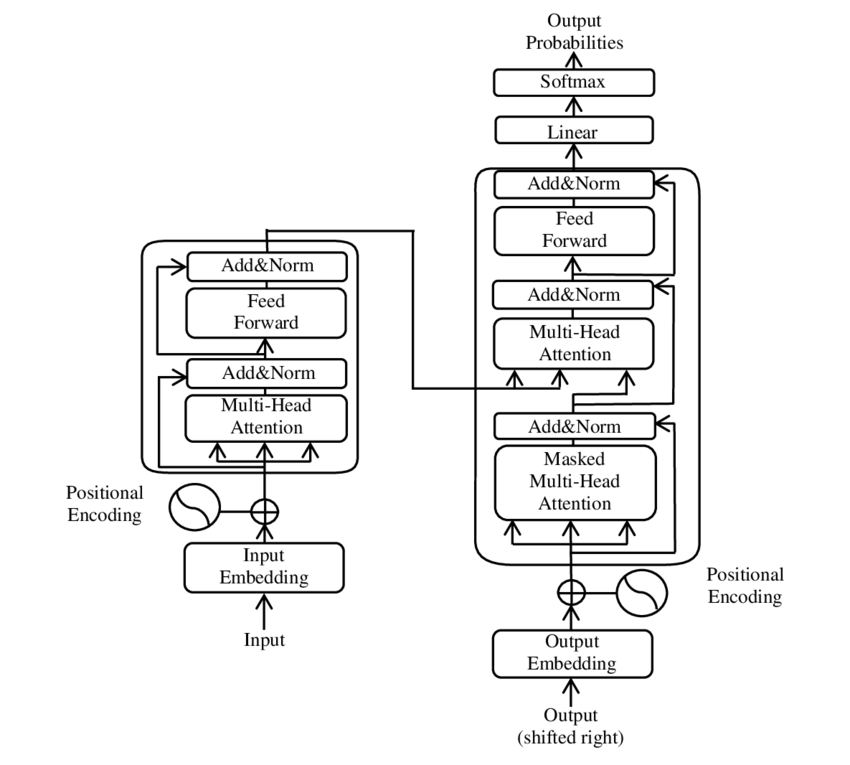|
Algospeak
In social media, algospeak is the use of coded expressions to evade automated content moderation. It is used to discuss topics deemed sensitive to moderation algorithms while avoiding penalties such as shadow banning, downranking, or de-monetization of content. It is a type of internet slang and a form of linguistic self-censorship. The term ''algospeak'' is a portmanteau of ''Algorithm'' and ''-speak''; it is also known as slang replacement or Voldemorting, referencing the fictional character also known as "He-Who-Must-Not-Be-Named". Algospeak is different from other types of netspeak in that its primary purpose is to avoid censorship, rather than to create a communal identity, though it may still be used for such end. Causes and motivations Many social media platforms rely on automated content moderation systems to enforce their guidelines, which are often not determined by users themselves. TikTok in particular uses artificial intelligence to proactively moderate content, i ... [...More Info...] [...Related Items...] OR: [Wikipedia] [Google] [Baidu] |
Leetspeak
Leet (or "1337"), also known as eleet or leetspeak, or simply hacker speech, is a system of modified spellings used primarily on the Internet. It often uses character replacements in ways that play on the similarity of their glyphs via reflection or other resemblance. Additionally, it modifies certain words on the basis of a system of suffixes and alternative meanings. There are many dialects or linguistic varieties in different online communities. The term "leet" is derived from the word ''elite'', used as an adjective to describe skill or accomplishment, especially in the fields of online gaming and computer hacking. The leet lexicon includes spellings of the word as ''1337'' or ''leet''. History Leet originated within bulletin board systems (BBS) in the 1980s,Mitchell.An Explanation of l33t Speak. where having "elite" status on a BBS allowed a user access to file folders, games, and special chat rooms. The Cult of the Dead Cow hacker collective has been credited wit ... [...More Info...] [...Related Items...] OR: [Wikipedia] [Google] [Baidu] |
Self-censorship
Self-censorship is the act of censoring or classifying one's own discourse, typically out of fear or deference to the perceived preferences, sensibilities, or infallibility of others, and often without overt external pressure. Self-censorship is commonly exhibited by film producers, directors, publishers, journalists, musicians, and social media personalities. Article 19 of the Universal Declaration of Human Rights guarantees freedom of speech from all forms of censorship. Article 19 explicitly states that "everyone has the right to freedom of opinion and expression; this right includes freedom to hold opinions without interference and to seek, receive and impart information and ideas through any media and regardless of frontiers." The practice of self-censorship, like that of censorship itself, has a long history. Reasons for self-censorship Psychological People often communicate to affirm their identity and sense of belonging. People may express their opinions or withho ... [...More Info...] [...Related Items...] OR: [Wikipedia] [Google] [Baidu] |
Bleep Censor
A bleep censor is the replacement of profanity and classified information with a beep (sound), beep sound (usually a ), used in public television, radio and social media. History Bleeping has been used as a standard since 1998 as a means of Censorship, censoring TV and radio programs to remove content not deemed suitable for "family", "daytime", "broadcasting", or "international" viewing, as well as sensitive classified information for security. The bleep censor is a software module, manually operated by a broadcast technician. A bleep is sometimes accompanied by a digital blur pixelization or box over the speaker's mouth in cases where the removed speech may still be easily understood by lip reading. In closed captioning, subtitles, bleeped words are usually represented by "[bleep]". Sometimes the phrases "[expletive]", "[beep]", "[censored]", and "[explicit]" are used, while it is also common (though less so) to see hyphens (e.g. abbreviations of the word "fuck" like ''f—k'' ' ... [...More Info...] [...Related Items...] OR: [Wikipedia] [Google] [Baidu] |
Cockney Rhyming Slang
Rhyming slang is a form of slang word construction in the English language. It is especially prevalent among Cockneys in England, and was first used in the early 19th century in the East End of London; hence its alternative name, Cockney rhyming slang. In the US, especially the criminal underworld of the West Coast between 1880 and 1920, rhyming slang has sometimes been known as Australian slang. The construction of rhyming slang involves replacing a common word with a phrase of two or more words, the last of which rhymes with the original word; then, in almost all cases, omitting, from the end of the phrase, the secondary rhyming word (which is thereafter implied), Bryson, a humourist, states that there is a special name given to this omission: "the word that rhymes is almost always dropped... There's a technical term for this process as well: hemiteleia". Given that this is a genus of plant species, and appears in no readily available sources as a linguistic term, it is unc ... [...More Info...] [...Related Items...] OR: [Wikipedia] [Google] [Baidu] |
Pandemic
A pandemic ( ) is an epidemic of an infectious disease that has a sudden increase in cases and spreads across a large region, for instance multiple continents or worldwide, affecting a substantial number of individuals. Widespread endemic (epidemiology), endemic diseases with a stable number of infected individuals such as recurrences of seasonal influenza are generally excluded as they occur simultaneously in large regions of the globe rather than being spread worldwide. Throughout human history, there have been a number of pandemics of diseases such as smallpox. The Black Death, caused by the Plague (disease), Plague, caused the deaths of up to half of the population of Europe in the 14th century. The term ''pandemic'' had not been used then, but was used for later epidemics, including the 1918 Influenza A virus subtype H1N1, H1N1 influenza A pandemic—more commonly known as the Spanish flu—which is the Deadliest pandemics in history, deadliest pandemic in history. The mos ... [...More Info...] [...Related Items...] OR: [Wikipedia] [Google] [Baidu] |
Lesbian
A lesbian is a homosexual woman or girl. The word is also used for women in relation to their sexual identity or sexual behavior, regardless of sexual orientation, or as an adjective to characterize or associate nouns with female homosexuality or same-sex attraction. Relatively little in history was documented to describe female homosexuality, though the earliest mentions date to at least the 500s BC. When early sexologists in the late 19th century began to categorize and describe homosexual behavior, hampered by a lack of knowledge about homosexuality or women's sexuality, they distinguished lesbians as women who did not adhere to female gender roles. They classified them as mentally ill—a designation which has been reversed since the late 20th century in the global scientific community. Women in homosexual relationships in Europe and the United States responded to the discrimination and repression either by hiding their personal lives, or accepting the label of outcast ... [...More Info...] [...Related Items...] OR: [Wikipedia] [Google] [Baidu] |
New York Times
''The New York Times'' (''NYT'') is an American daily newspaper based in New York City. ''The New York Times'' covers domestic, national, and international news, and publishes opinion pieces, investigative reports, and reviews. As one of the longest-running newspapers in the United States, the ''Times'' serves as one of the country's Newspaper of record, newspapers of record. , ''The New York Times'' had 9.13 million total and 8.83 million online subscribers, both by significant margins the List of newspapers in the United States, highest numbers for any newspaper in the United States; the total also included 296,330 print subscribers, making the ''Times'' the second-largest newspaper by print circulation in the United States, following ''The Wall Street Journal'', also based in New York City. ''The New York Times'' is published by the New York Times Company; since 1896, the company has been chaired by the Ochs-Sulzberger family, whose current chairman and the paper's publ ... [...More Info...] [...Related Items...] OR: [Wikipedia] [Google] [Baidu] |
Sentiment Analysis
Sentiment analysis (also known as opinion mining or emotion AI) is the use of natural language processing, text analysis, computational linguistics, and biometrics to systematically identify, extract, quantify, and study affective states and subjective information. Sentiment analysis is widely applied to voice of the customer materials such as reviews and survey responses, online and social media, and healthcare materials for applications that range from marketing to customer service to clinical medicine. With the rise of deep language models, such as RoBERTa, also more difficult data domains can be analyzed, e.g., news texts where authors typically express their opinion/sentiment less explicitly.Hamborg, Felix; Donnay, Karsten (2021)"NewsMTSC: A Dataset for (Multi-)Target-dependent Sentiment Classification in Political News Articles" "Proceedings of the 16th Conference of the European Chapter of the Association for Computational Linguistics: Main Volume" Simple cases * "Coron ... [...More Info...] [...Related Items...] OR: [Wikipedia] [Google] [Baidu] |
Large Language Model
A large language model (LLM) is a language model trained with self-supervised machine learning on a vast amount of text, designed for natural language processing tasks, especially language generation. The largest and most capable LLMs are generative pretrained transformers (GPTs), which are largely used in generative chatbots such as ChatGPT or Gemini. LLMs can be fine-tuned for specific tasks or guided by prompt engineering. These models acquire predictive power regarding syntax, semantics, and ontologies inherent in human language corpora, but they also inherit inaccuracies and biases present in the data they are trained in. History Before the emergence of transformer-based models in 2017, some language models were considered large relative to the computational and data constraints of their time. In the early 1990s, IBM's statistical models pioneered word alignment techniques for machine translation, laying the groundwork for corpus-based language modeling. A sm ... [...More Info...] [...Related Items...] OR: [Wikipedia] [Google] [Baidu] |
GPT-4
Generative Pre-trained Transformer 4 (GPT-4) is a multimodal large language model trained and created by OpenAI and the fourth in its series of GPT foundation models. It was launched on March 14, 2023, and made publicly available via the paid chatbot product ChatGPT Plus until being replaced in 2025, via OpenAI's API, and via the free chatbot Microsoft Copilot. GPT-4 is more capable than its predecessor GPT-3.5. GPT-4 Vision (GPT-4V) is a version of GPT-4 that can process images in addition to text. OpenAI has not revealed technical details and statistics about GPT-4, such as the precise size of the model. As a transformer-based model, GPT-4 uses a paradigm where pre-training using both public data and "data licensed from third-party providers" is used to predict the next token. After this step, the model was then fine-tuned with reinforcement learning feedback from humans and AI for human alignment and policy compliance. Background OpenAI introduced the fir ... [...More Info...] [...Related Items...] OR: [Wikipedia] [Google] [Baidu] |
Julia Fox
Julia Fox (born February 2, 1990) is an Italian and American actress, model, and media personality. Her debut performance was in the 2019 film ''Uncut Gems'', for which she was nominated for the Gotham Independent Film Award for Breakthrough Actor, Breakthrough Actor Award at the Gotham Independent Film Awards 2019, 2019 Gotham Awards. She is also known for her eccentric style and online presence. In October 2023, Fox released her debut book, a memoir titled ''Down The Drain''. She has since released a single by the same name. She also hosts a Spotify podcast with Niki Takesh, titled ''Forbidden Fruits''. Early life Fox was born in Milan, Italy, to an Italian mother, Gracie, and an American father, Thomas Fox, who worked as a contractor. The two split during her childhood. Fox has two siblings. Until age six, she was raised by her grandfather in the small town of Saronno, located outside Milan, while her mother finished college. During this time, Fox's father lived on a boat d ... [...More Info...] [...Related Items...] OR: [Wikipedia] [Google] [Baidu] |






